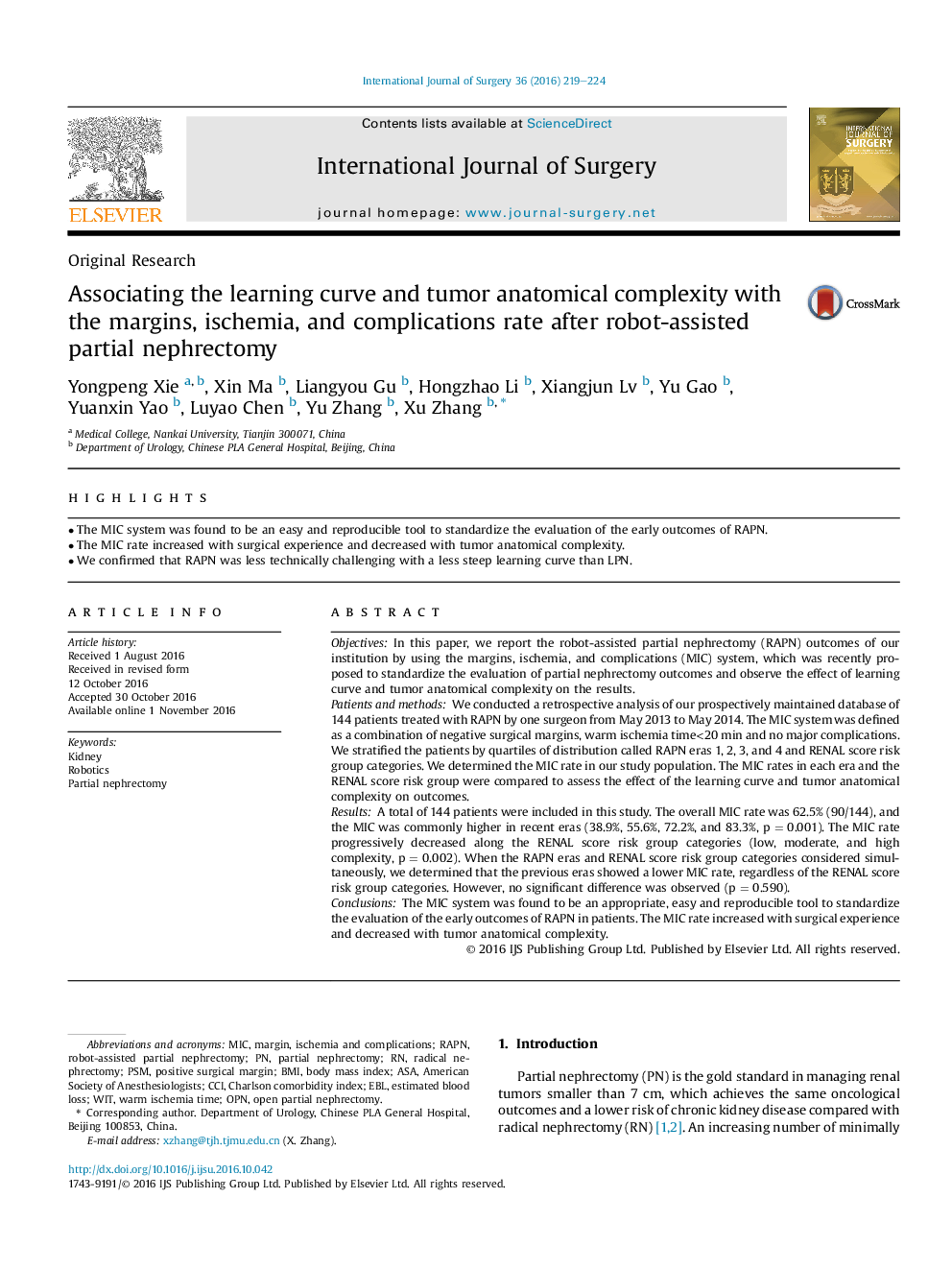| کد مقاله | کد نشریه | سال انتشار | مقاله انگلیسی | نسخه تمام متن |
|---|---|---|---|---|
| 5731909 | 1611947 | 2016 | 6 صفحه PDF | دانلود رایگان |
- The MIC system was found to be an easy and reproducible tool to standardize the evaluation of the early outcomes of RAPN.
- The MIC rate increased with surgical experience and decreased with tumor anatomical complexity.
- We confirmed that RAPN was less technically challenging with a less steep learning curve than LPN.
ObjectivesIn this paper, we report the robot-assisted partial nephrectomy (RAPN) outcomes of our institution by using the margins, ischemia, and complications (MIC) system, which was recently proposed to standardize the evaluation of partial nephrectomy outcomes and observe the effect of learning curve and tumor anatomical complexity on the results.Patients and methodsWe conducted a retrospective analysis of our prospectively maintained database of 144 patients treated with RAPN by one surgeon from May 2013 to May 2014. The MIC system was defined as a combination of negative surgical margins, warm ischemia time<20 min and no major complications. We stratified the patients by quartiles of distribution called RAPN eras 1, 2, 3, and 4 and RENAL score risk group categories. We determined the MIC rate in our study population. The MIC rates in each era and the RENAL score risk group were compared to assess the effect of the learning curve and tumor anatomical complexity on outcomes.ResultsA total of 144 patients were included in this study. The overall MIC rate was 62.5% (90/144), and the MIC was commonly higher in recent eras (38.9%, 55.6%, 72.2%, and 83.3%, p = 0.001). The MIC rate progressively decreased along the RENAL score risk group categories (low, moderate, and high complexity, p = 0.002). When the RAPN eras and RENAL score risk group categories considered simultaneously, we determined that the previous eras showed a lower MIC rate, regardless of the RENAL score risk group categories. However, no significant difference was observed (p = 0.590).ConclusionsThe MIC system was found to be an appropriate, easy and reproducible tool to standardize the evaluation of the early outcomes of RAPN in patients. The MIC rate increased with surgical experience and decreased with tumor anatomical complexity.
Journal: International Journal of Surgery - Volume 36, Part A, December 2016, Pages 219-224
